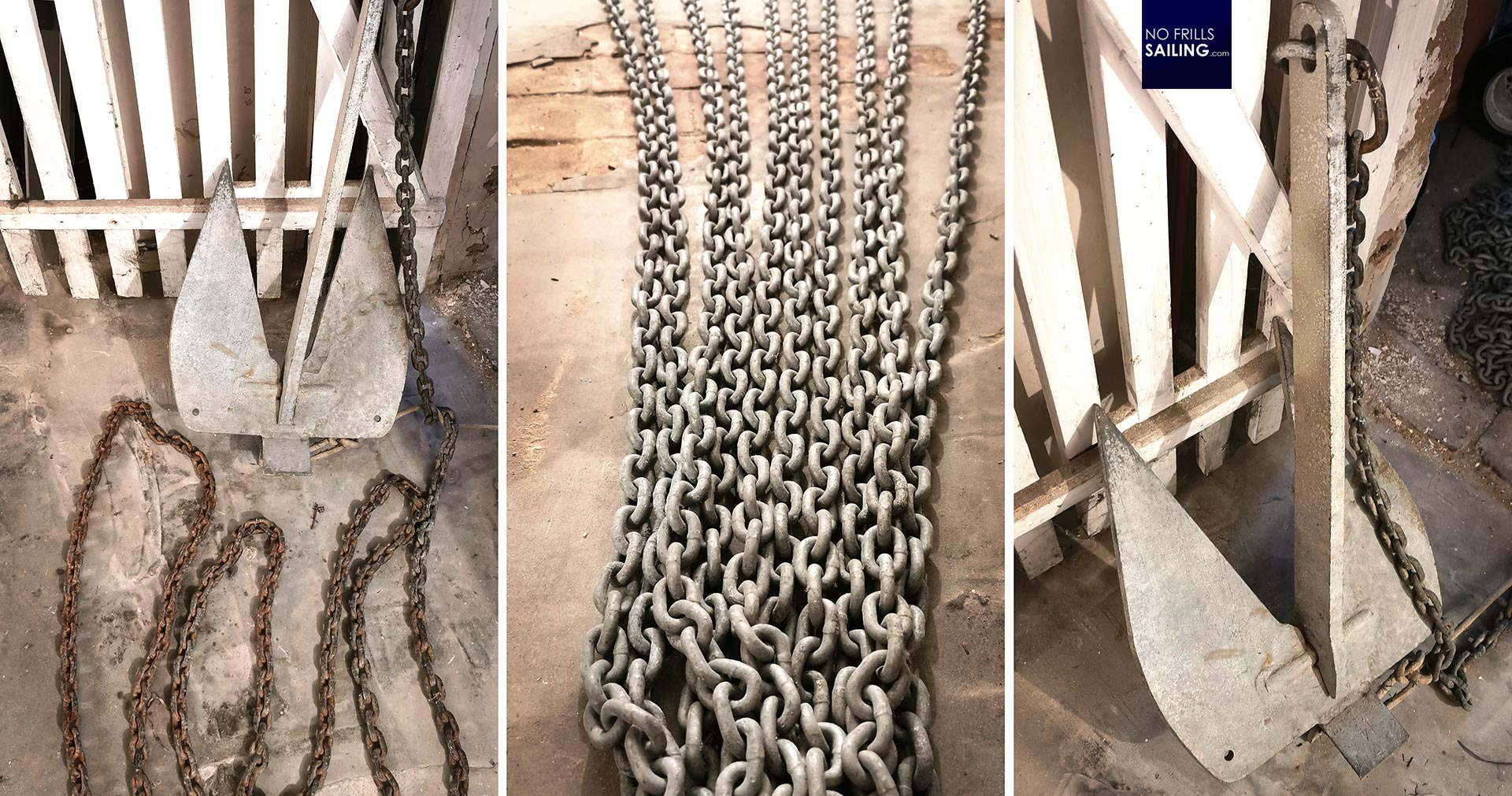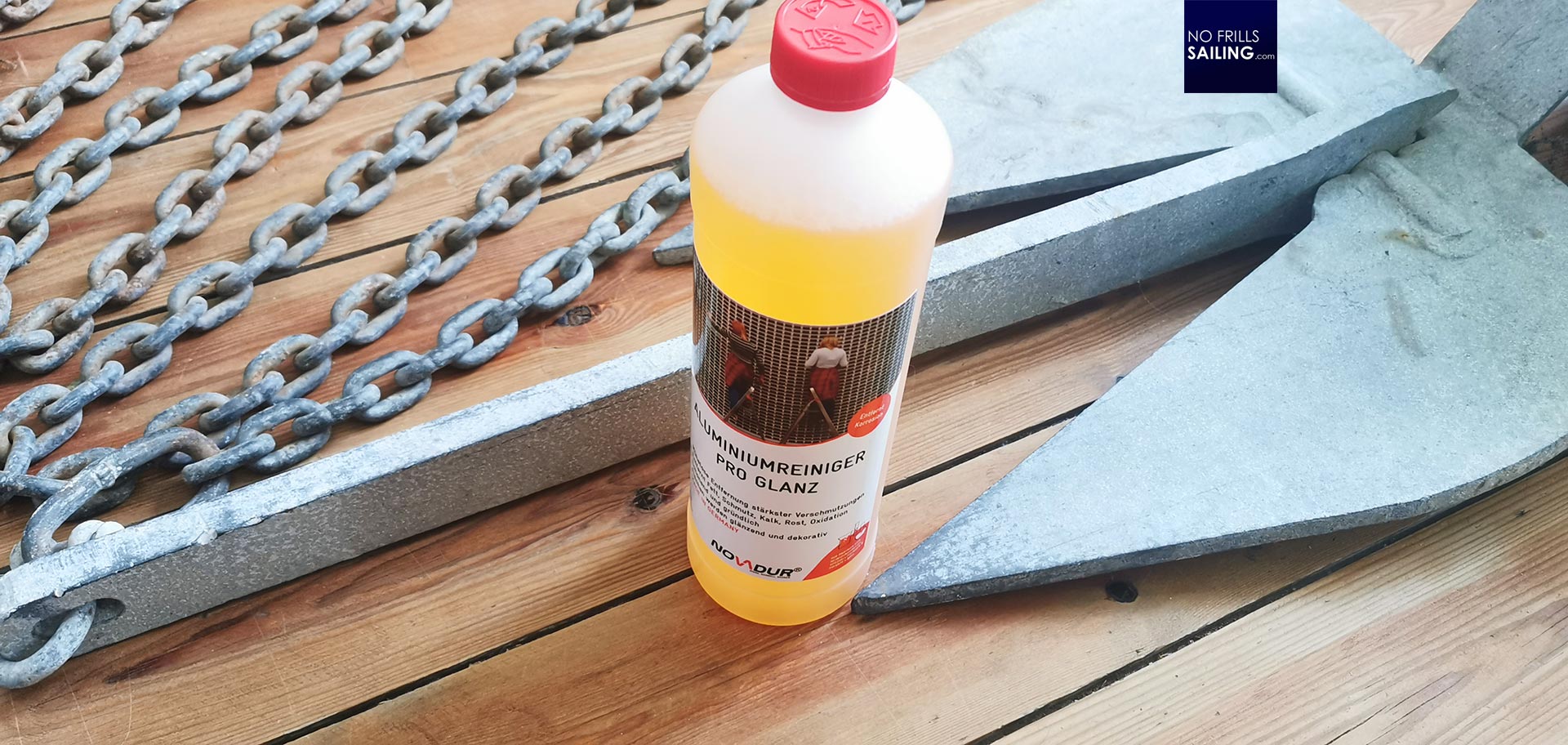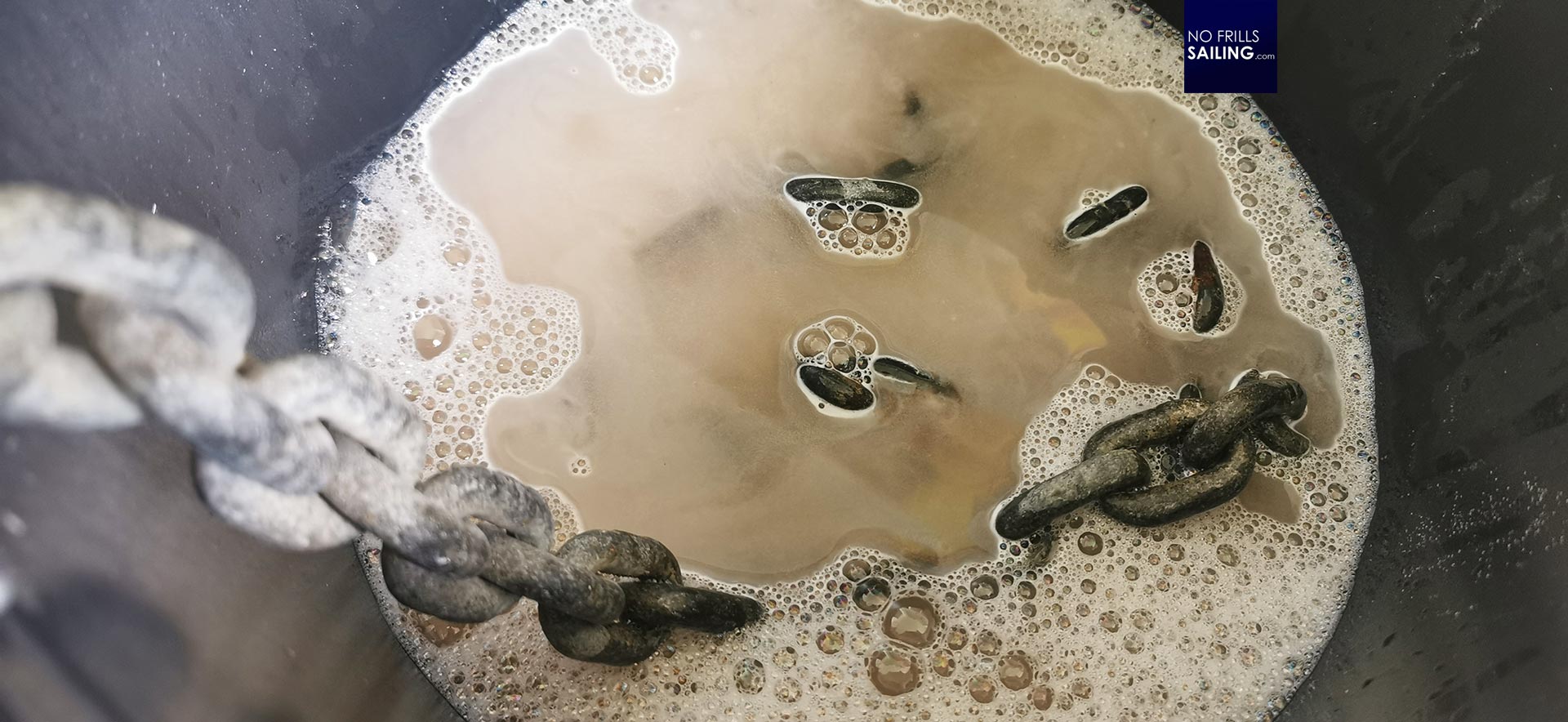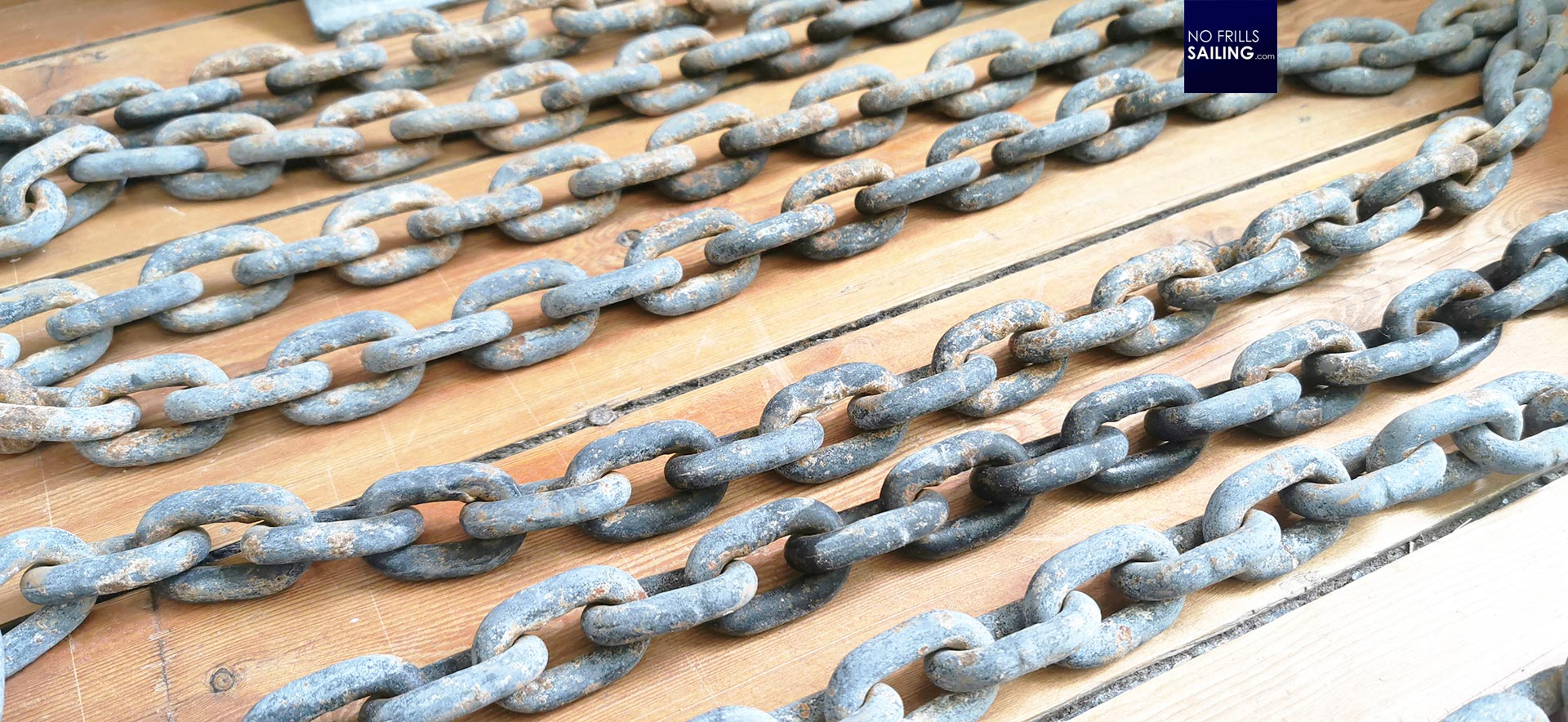Last weekend I stumbled upon the anchor set-up from my first boat, the King´s Cruiser 33, down in my basement storage. It´s a classy Britany anchor and some 30 meters of chain. Since I do not have any use for this stuff, I thought let´s put it on eBay, maybe somebody else is happy to make a bargain?

The steel parts are not new, of course. My boat back then was built in 1979 and so I think anchor and chain could be as old as this, at least 20, maybe 30 years for sure. From the owner of the back then I know that he was dropping the anchor frequently and so the equipment shows signs of heavy usage and wear and time of the decades. And so I thought, well, maybe cleaning it could make it look prettier … and raise the price. Let´s do it!
Is there a magic potion?
I´ve tried another “magic potion”: Coke. Well, with a mixed outcome. Regarding this chain, of course, I cannot roll back the wheel of time. All the scars and dents cannot be made go away. But the oxidation products, the patina which covers both chain and anchor would be nice to peel off. Also, especially the five meters of anchor chain which directly connected to the anchor were very rusty.

I dove into the world of chemical cleaning products. There are countless of liquids offering cleansing of anodized and galvanized steel and aluminium parts. Most of them are based on acidic agents which are aid to chemically change the oxidation residue and make it disappear, fall off or ready for being scrubbed away. I ordered two liters of a product “Made in Germany”, the ratings (by car enthusiasts leaning their engine blocks for example) seemed reasonable.
Acid cleaning an old Britany anchor
As the instructions said, I thinned the pure agent at a ratio of 1:3 with fresh water. Judging from the various colorful warning signs, stating “acidic!”, “harmful to skin & flesh!” or “corroding your lungs!”, working with such an agent is like hell. Well, I made all windows provide a nice flow of fresh air and protected my hands with a double layer of rubber gloves. Since I wear glasses, my eyes were protected.

The solution (and even the pure stuff) does neither smell nor “feel” dangerous. Some of my ordinary kitchen or floor cleaning agents do smell a lot sicker. Slowly I let down the most rusty part of the chain into the bucket. The once clear solution immediately turned “milky”, but there wasn´t any sound nor bubbling, as one would expect.

When the whole chain was submerged, I “stirred” the contents to make sure that the solution is evenly distributed. Noticing some more “foamy” white products of the reaction, I also felt some heat through the gloves: In fact, the chemical reaction was taking place and producing heat as a byproduct. Interesting. By the way, it did not smell any different at all.
No dilution: Anchor cleaning
As the instructions said, I should let the chain stay in the solution for at least twenty minutes, so I took on the anchor. This 14 kilogram Britany wasn´t rusty or dirty at all, apparently the owners had it rinsed with fresh water all the time. It just contained a patina of white oxidation product on top of the galvanic layer. I thought I could maybe make it look a bit “prettier”.

An so I tried the un-diluted agent. I poured some of it into an old cup. It really looks like p***, but anyway. Slowly applying the agent onto the surface of the anchor by an old sponge, an instant chemical reaction appeared. The surface turned white instantly and a 2 millimeter thick layer of white foam formed. After soaping the whole upside of the anchor, I also let it soak and sit for 15 to 20 minutes. The white stuff calmed down and the anchor returned to its looks that it had before. I kneeled down, took the sponge and started to scrub.

The chemical reaction returned and the more I scrubbed the more it foamed. Just like washing the dishes, the surface-agent-reaction produced more and more foam. But what made me stumble was the fact that apparently the shiny-white color of the foam never changed: Shouldn´t it contain chemical products, rust or dirt? Well, maybe, maybe not. I am not a Chemist.

So I repeated this treatment with the backside of the anchor. The whole process took place in a matter of some 40 minutes. There is really no problem in doing this, safety-wise, I also received some sprinkles of pure agent onto my forearm and there have been no reactions whatsoever, even now, days after this project.
The outcome
I dragged the anchor into my shower. Five minutes later I poured the contents of the bucket into the shower as well. Spraying fresh water over it, I rinsed and cleaned both metal parts thoroughly. The chain was most interesting: I really could see the thick brown dirt, rust and residue come off. It took a long time and liters of water to wash away all the dirt. Apparently, the acidic cleaner had done its work!

The anchor looked basically the same as before. The white layer of oxidation-residue maybe gt a bit thinner and I also could spot shiny metallic spots (mainly the weldseams) which really looked like brand new, but overall the outcome wasn´t that great. I would say that the anchor gained not more than 20 per cent of “good looks”. It´s even worse for the chain, though …

As promising as the chain looked when I rinsed it, as disappointing it left me when it was dry again: The rost did not disappear at all and although some of the white stuff went away, it still looks like it is: A 30 years old heavy saltwater used anchor chain. Maybe one should take off the rust by mechanical means, like sand-blasting. Maybe the acidic agent just “etches” the stuff and it should receive a treatment by sanding, scrubbing or other means. In terms of letting the rust disappear by means of a “magic potion” this experiment failed. I just went down with the price in eBay, by the way …
Connected articles of interest:
Testing the Ultra Anchor
Anchoring in Sweden: Archipelago adventure!
